
–
Holiday issue with extra reading.
Every little detail matters
Every little detail matters, whether it is for the environment, the taste of the wine or the sales figures. We have heard it many times from many wine producers. The details will play an even bigger role in the future.

Reducing the bottle weight by 100 grams or just 50 grams affects the energy consumption when manufacturing the bottle and transporting it to the customer. The result is reduced carbon dioxide emissions.
Or reducing the number of times you spray. Going over the vineyards nine times with the tractor instead of 11 during the summer may not sound revolutionary, but it is important in the long run. Or to reduce the planting density (which they have just decided to allow in Champagne) which leads to fewer rows, fewer tractor kilometres, less emissions.
Small details can change the taste in a big way. A few degrees warmer or colder during the fermentation. A few per cent of a new grape in the blend. A little less new oak. Decreasing the dosage with a few grams in a champagne.
Sometimes a producer changes some details on the label, and the wine sells better. In Bordeaux this autumn, we have seen many transformed and modernised labels, changed from the old ones to attract new customers. Of course, this does not change the character of the wine.
But a producer in Champagne once told me that she had a group blind taste her champagne with two different labels to see which one they liked best. The tasters did not know it was exactly the same champagne but with different labels. This way, she figured out which label design she should choose. If you like the label, the brain is a little more set on liking the wine.
It is not uncommon today in Champagne to use the local oak to age the base wine. Using a local product is an important detail when the producer tells the story around the wine. Does that make the wine tastier? It probably depends.
What makes a wine taste the way it does? It is impossible to name just one thing; it is all the little details acting together.
Wine tours
Do not forget to take a good look at our wine tour program. We have exciting wine tours planned for 2022 (and 2023).
You are probably as eager as we are to get out in the vineyards?
Travel to the wine regions with an experienced and knowledgeable wine tour operator. You know who.
If you want to discover the best in the wine regions and get some unforgettable memories, travel with one of the most experienced and most knowledgeable wine tour operators.
More info on our wine tours here.
We wish you all a very Happy New Year.
Enjoy the Brief!
Britt & Per
If you appreciate what we do, you can help us:Tell your friends about the Brief or send it to them.
Like us and follow us on social media:
BKWine Magazine on Facebook | Wine Tours on Facebook
Twitter | Instagram | Linkedin | YouTube
What’s on at BKWine Tours
BKWine is also one of the world’s leading wine tour operators. Here’s what we currently have on our scheduled wine tour program:
- Bordeaux, April 20-24, 2022
- Champagne, May 4-8, 2022
- Bordeaux and Champagne, Sept 28 – Oct 6, 2022
- Champagne, Sept 28 – Oct 2, 2022
- Bordeaux, October 2-6, 2022
- Chile-Argentina, January 2023
- South Africa, February 2023
- New Zealand, March 15-30, 2023
We also make custom designed wine tours.
We’re different than most other wine tour operators. We are people who know wine inside out, who travel constantly in wine regions, who write award winning books about wine. Who do this out of passion.
Our wine tours are different from others.
More in wine tours: BKWineTours.com.
A typical year we organise more than 30 wine tours to destinations across the world. In Europe: France, Italy, Spain, Portugal and more. World-wide: South Africa, Chile, Argentina, New Zealand. Thanks to our Scandinavian background we have a separate offer for the Scandinavian market. These are sometimes offered in English and also available as custom made tours. For example, these destinations:
Read our books
We have written eleven wine books. They have won awards from the Gourmand Awards, The International Organisation of Vine and Wine (OIV) and others.
Unfortunately, only one of them has been translated to English; the others are (so far) only available in Swedish. This is the one that is available in English:
Here’s the full list of our books:
- The Wonderful World of Wine
- Languedoc-Roussillon, the Wines of Southern France
- Champagne, the Wine and the Growers
News from the World of Wine
Short briefs on what’s been happening in the world of wine recently and other interesting things.
How long will Alsace be able to resist the bag-in-box?
Alliance Alsace, a cooperative in Turckheim, launched its first bag-in-box in 2020. The well-known Alsace producer Arthur Metz also sells a wine in bag-in-box. For both these producers, the grapes come from their vineyards in Alsace, mainly pinot blanc and pinot gris. But it is still not Alsace wine.
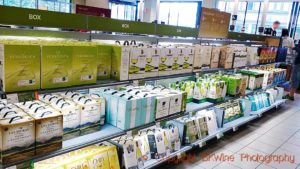
An Alsace, according to the rules, must be sold in the traditional flûte bottle. So, Alliance Alsace and Arthur Metz sell their bag-in-box wines as vin de france, a wine without an origin (without an official one at least).
No exceptions may be made from this strict bottling rule, although the demand for bag-in-box is increasing. Some producers have also tried to get permission to sell their red wines in another bottle shape. But no. Maybe it’s time for Alsace to review its appellation rules? Source: Rayon Boissons.
Super Tuscans began as a protest against white grapes
Super-Tuscan is still a much-used denomination. The first producers of these rebel wines have recently founded an association, the Comitato Historical Super Tuscans. The members are 16 in total. They have all produced a famous super Tuscan before 1994, and they are all based in Chianti Classico.
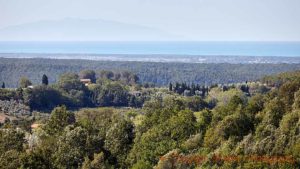
The very first wine that protested against the grape rules of Chianti came in 1968, and it was Vigorello, a 100% sangiovese from San Felice. The wine had to be sold as a table wine (vino da tavola) because the rules of Chianti at that time required a certain amount of white grapes in the wine. Then followed Tignanello with 20% Bordeaux grapes and Solaia with 100% Bordeaux grapes. In 1994, the geographical indication Tuscany IGT was introduced, which many super Tuscans use today. Before 1994, they were all vino da tavola.
Perhaps this can put a stop to the marketeers’ silly abuse of the denomination for any plonk from Tuscany with a touch of cabernet. A wine from Tuscany does not automatically become a Super Tuscan just because it contains Bordeaux grapes. It must be a very high quality wine, usually costly, in the spirit of the original rebel wines. Read more: Decanter.
First harvest report 2022 from South Africa looks promising
It’s still early days. But the first report on the South African harvest 2022 has arrived. The winter was as should be, with snow in the mountains and rain filling the dams. These were filled to 81% when the growing season began in September.
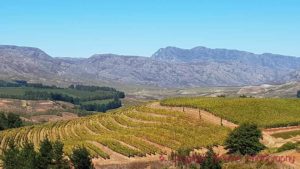
A cool and somewhat rainy spring led to late budding, 1-2 weeks later than usual. The cool weather continued, but in November, it got warmer, and the vegetation gained momentum. At the flowering time, the year seemed to be quite normal after all.
That said, it’s still early days, but the quality looks promising. The quantity will probably be slightly lower than in 2021 but higher than the average over the past five years, which have been marked by drought. The decrease is believed to be mainly due to vineyards being pulled up. Read more: Wine South Africa.
Travel: Come on a wine tour to South Africa with BKWine.
Glass manufacturer Verallia invests in sustainability
Glass bottles play a significant role in the wine industry. The company Verallia is the largest producer of glass bottles in Europe. They have seven factories around the French wine regions and have close contact with the winegrowers.
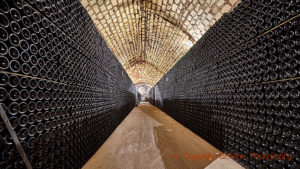
The company is heavily involved in environmental issues, a necessity for a company whose product accounts for a not insignificant part of the wine industry’s carbon dioxide emissions. They work actively to increase the recycling of glass and the use of lightweight bottles.
Verallia also rewards sustainability projects among wine producers through a special fund. This year, the company awarded the Cave de Lugny (Burgundy) for developing the biodiversity in the vineyard and La Cave Saint Maurice (IGP Cévennes) for preserving the habitat of pollinating insects. The two other winners were Château Sainte Roseline (Provence), where they are doing research on the symbiosis between fungi and the roots of the vine that aims at reducing spraying and irrigation, and Les Vignerons Associés des Monts de Bourgogne for their organic range that is sustainable throughout the process. Read more: Verallia.
Read: Read our book on organic and sustainable wine.
Nicolas Feuillatte, Champagne’s largest cooperative, gets even bigger
Champagne’s largest cooperative has just become even bigger. Champagne Nicolas Feuillatte has merged with the smaller Coopérative Régionale des Vins de Champagne, better known under its Champagne Castelnau brand.
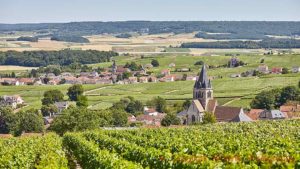
Together, they will form a giant capable of producing 24 million bottles from 3,000 hectares of vineyards, 9% of champagne’s total area. However, Moët & Chandon is still the largest producer, with around 30 million bottles. If you add the other houses owned by LVMH (Veuve Clicquot, Dom Pérignon, Ruinart Mercier, Krug), the figure is well over 50 million. Champagne produces 300-325 million bottles in a normal year.
The new cooperative group will be called “Terroirs et Vignerons de Champagne”. However, the fact that it will have this large capacity does not mean that it will produce 24 million bottles. The cooperatives in champagne also sell vast amounts of grapes, must and wine to the big houses. Read more: BFMtv.
Travel: Come on a wine tour to Champagne with BKWine.
Some favourites from Southern France for your winter dinners | what to buy
The red wines from the Languedoc, southern Rhône Valley and Provence often combine a delicious, dark fruit with good acidity, relatively soft tannins and a pleasant spiciness.
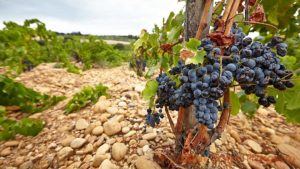
Here are some of our favourites that we have tasted this autumn.
- Domaine Jones Grenache Noir, 2017, IGP Côtes Catalanes, ~15 euro
- Mas Janeil Sans Souffre 2017, Côtes du Roussillon-Villages, ~16 euro
- Domaine de Bila-Haut Occultum Lapidem, Chapoutier, Côtes du Roussillon-Villages, ~15 euro
- Château de la Liquière 2019, Faugères, ~15 euro
- Domaines Des 2 Ânes Fontanilles 2017, Corbières, ~14 euro
- Les Cassagnes de la Nerthe 2019, Côtes-du-Rhône-Villages, ~18 euro
- Les Capitelles Rouge 2016, Château Mourgues du Gres, ~16 euro
- La Bastide Blanche 2019, Bandol, ~19 euro
Read our grape variety profiles of grapes of the south: grenache and syrah.
Bubbles, lots of bubbles, but who sell most? The biggest sparkling wine producers
People drink a lot of sparkling wine during the end of year holidays. There is a lot to choose from. Admittedly, champagne is still the most prestigious bubble, but in volume, prosecco is the winner.
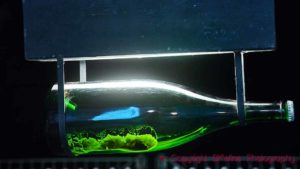
1. Prosecco
Around 500 million bottles of prosecco are sold annually; 70-80% of it is exported. Prosecco will probably break export records this year, 2021. The United States and the United Kingdom are by far the largest markets for prosecco. France comes a bit surprisingly in third place but very far behind.
2. Champagne
Champagne sells between 300-325 million bottles a year. 2020 was an exception with only 244 million bottles. France is the largest champagne market, and exports are around 50%. The United Kingdom and the United States are the most important markets. In 2020, Sweden was ninth in the export league, with 3.3 million bottles.
3. Cava
Cava sells typically around 250 million bottles. In 2020, however, the figure was down to 215 million. Cava exports 70% of its production. Germany is the leading market, followed by the United Kingdom, Belgium, the United States and Japan. Sweden comes in seventh place with 7.5 million bottles. (Excuse our Sweden-focus, but we ARE Swedish.)
Travel: Come on a wine tour to Champagne with BKWine.
How much sulphite in your wine? Added or natural?
From being a fairly unremarkable additive in most wines, sulphur dioxide has recently turned into a burning topic of discussion for wine enthusiasts. SO2 is added to the wine to protect it from premature oxidation. It also kills unwanted microorganisms.
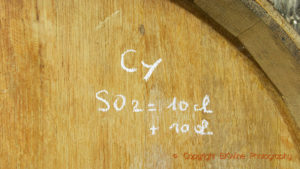
Sulphur dioxide has been used widely in the wine industry since the end of the 18th century, so it is a long-standing practice. In recent years, there has been a substantial reduction in the amounts of sulphur added, which entails various challenges for wine producers – and consumers.
In addition to the sulphur dioxide that the winemaker adds to the wine, wine naturally contains some sulphites synthesised by the yeasts. It is often only a few milligrams per litre, but it is quite common for the “natural” amount to reach 30 and 50 mg/l and in extreme cases up to 150-200 mg. How much depends on different things: how much you oxygenate the must, if it has been clarified, at what temperature you ferment, and more. If no sulphur dioxide is added, you are allowed to put on the label “no sulphites added”. But that says nothing about exactly how much sulphur the wine contains. The warning “contains sulphites” must appear if it contains more than 10 mg/l. Natural wine organisations often accept 30-50 mg/l of total sulphur, sometimes up to 70 mg/l. In other words, natural wines can also contain substantial amounts of sulphur. Read more VigneVin (pdf).
Read: Read more about additives in wine in the book on organic wines.
Features of the Month
Articles and features published on BKWine Magazine and on our wine travel blog and photography blog in the last month.
World wine export grows in 2021-H1, trading pattern changes | Per on Forbes
The international trade in wine grew a lot in the first half of 2021, the latest numbers from the OIV reveal. This was expected, considering the difficulties of world trade in 2020. But even compared to pre-covid 2019, world trade in wine increased.
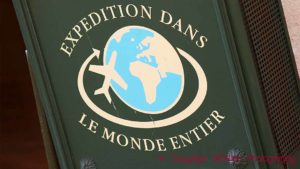
The details of wine export and import numbers also show that politics is having a significant impact on the wine trade, in particular Chinese actions and Brexit.
Read more in Per’s article on BKWine Magazine, originally published on Forbes: World wine export grows in 2021-H1, trading pattern changes | Per on Forbes.
Finally. The growers from Champagne visit us again, with buying recommendations
Meeting the winemakers adds an extra dimension to the wine and the experience. It makes you better understand what they want to achieve. It gives you even more enjoyment from what you have in your glass. It is best done “on-site” on a wine tour, second-best at a wine fair.

The online wine store Franska Vinlistan has an exciting – impressive – collection of champagnes in its range. Just over a dozen came to Sweden and showed their wines to BKWine Magazine’s Sven-Olof Johansson. Here you get his picks of the best champagnes.
Read more in Sven-Olof Johansson’s article on BKWine Magazine: A selection for your party (or your everyday): champagnes from Franska Vinlistan.
Travel: Go on a wine tour to Champagne this spring with BKWine.
One of the world’s great white wine grapes, chenin blanc | Britt on Forbes
Chenin blanc is one of the world’s top white grape varieties. Yet, sometimes chenin wine producers in Vouvray are frustrated. Selling a chenin blanc is not as easy as selling a sauvignon blanc, they say. Sauvignon blanc is more famous, more easy-drinking, easier to understand.
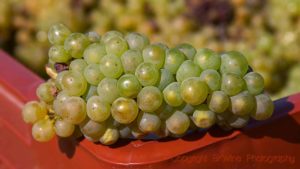
A chenin blanc is more complex and amazingly versatile. You can make bone dry, crispy wines out of it but also lusciously sweet ones. And everything in between. It only depends on when you pick the grapes. Well, almost only. Read on and you will learn all essentials you need to know about this great grape variety.
An article in our series of grape variety profiles.
Read more in Britt’s article on BKWine Magazine, originally published on Forbes: Chenin blanc, a fantastic grape shared between France and South Africa | Grape Profile | Britt on Forbes.
Travel: Come on a wine tour to South Africa, the chenin blanc country, with BKWine.
Elegant prestige champagne from Palmer
Champagne Palmer is a fairly small cooperative, counted in champagne dimensions. They have around 400 hectares of vineyards. They are known for the long ageing of the wines and their fondness for magnum bottles.
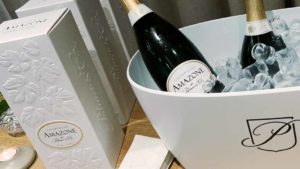
Amazone de Palmer is their prestige champagne cuvée, a blend of chardonnay and pinot noir. Palmer’s CEO and (and oenologist) came to Sweden to present the latest version, based in 2012, for BKWine Magazine’s Sven-Olof Johansson.
Read more in Sven-Olof Johansson’s article on BKWine Magazine: Amazone de Palmer – prestige champagne from a top-notch cooperative.
Travel: Go on a wine tour to Champagne this spring with BKWine.
Explore Armenia, the unknown cradle of wine, with two unusual wines | Britt on Forbes
Here’s your introduction to Armenian wines. Armenia is a small wine country, but one with a long history. Wine production here almost disappeared during the Soviet era. But a new generation of winemakers is reviving the industry.
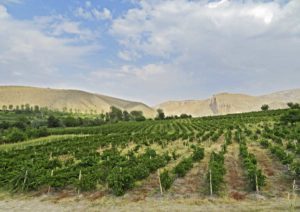
One of the exciting aspects of it is the unique, very old grape varieties that exist here. Read on to learn more about Armenian wines. Illustrated with two wines from the country.
Read more in Britt’s article on BKWine Magazine, originally published on Forbes: Explore Armenia, the unknown cradle of wine, with two unusual wines | Britt on Forbes.
Two wines from a quality cooperative in the Languedoc
If you go to Fitou and the southern part of Corbières in the French Languedoc, you will be greeted by a wild, barren and beautiful landscape. Here, the vines coexist with the local shrub vegetation called la garrigue and which consists of juniper bushes, small oaks and wild herbs. It is dry and windy.

Local grape varieties, such as carignan and grenache, have learned to thrive. And here, in the borderland between Corbières and Fitou, we find the small cooperative Les Maitres Vignerons de Cascastel.
Read more in Britt’s article on BKWine Magazine, originally published on Forbes: Les Maitres Vignerons de Cascastel: Wines from the rugged land of the south in Fitou and Corbières | Britt on Forbes.
We Don’t Want Any Crap in Our Wines, by Camilla Gjerde | Book Review
Camilla Gjerde fell in love with natural wines in 2008 when she drank a Sicilian frappato made by Arianna Occhipinti. Eventually, the dream of making a book about natural wines was born. Several of her favourite wines are made by women, and that became the theme of the book: women who make natural wines.

The book is about seven female winemakers in France, Italy and Austria. They all get plenty of space in the book. Camilla starts with a short introduction to natural wine, but then, these winemakers are the main characters. We hear about their dreams, their lives, how they work. It is fascinating and well written. But not without some issues.
Read more in Britt’s article on BKWine Magazine: We Don’t Want Any Crap in Our Wines, by Camilla Gjerde | Book Review.
Wine Tours
Some information on our current and future wine tours. Book a wine tour with the “world’s top wine tour operator” today (or when you feel like travelling to wine country).
Bordeaux wine tours: a classic wine region looks to the future
Bordeaux today is a dynamic wine region that looks to the future. On top of the agenda is the environment. The producers know that they need to be open-minded to attract new wine consumers.
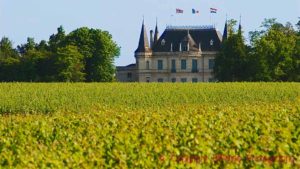
All this makes Bordeaux an exciting region to visit. Also, visiting the beautiful chateaux and tasting top-quality wines is a lovely treat. Some of our luxurious lunches will be served at the chateaux.
Bordeaux is a must to visit at least once in a wine-lifetime.
Every wine lover should visit Bordeaux.
- Wine tour to Bordeaux, April 20-24, 2022
- Wine tour to Bordeaux, October 2-6, 2022 (This autumn tour will also be offered in combination with the Champagne tour)
Book now: your wine tour with BKWine!
Champagne wine tour: learn all about the prestigious sparkling wine
People all over the world are drinking more and more sparkling wine. Not everything is champagne, far from it. But even if people drink more prosecco, Champagne is prestige and why it is so you understand better when you are in the region.
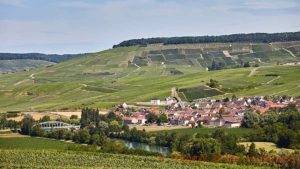
We will taste magnificent champagnes, sometimes on their own, sometimes with our superb lunches, and you will also get to know everything about the process of making champagne, about the terroir and about the grape varieties.
- Wine tour to Champagne, May 4-8, 2022
- Wine tour to Champagne, September 28-October 2, 2022 (This autumn tour will also be offered in combination with the Bordeaux tour)
Book now: your wine tour with BKWine!
The Grand Wine Tour: if you can’t decide between Champagne and Bordeaux
Instead of choosing between Champagne and Bordeaux, you can go to both. This Grand Wine Tour is a 9-day tour where you will get to know both these two prestigious, classical French wine regions.
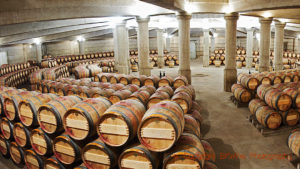
We start in Reims in Champagne, with its stunning Cathedral and after four nights (and three days of champagne-visits) we continue with the fast train to Bordeaux. We will have a few dinners together but you will also have time to stroll and discover these two beautiful cities in the evenings.
Don’t miss this unique opportunity to visit the two most famous wine regions in the world in one very enjoyable go.
- Wine tour to Champagne and Bordeaux, September 28 – October 6, 2022
Book now: your wine tour to Champagne-Bordeaux with BKWine!
South America wine tour 2023: Argentina and Chile, two extraordinary wine countries
Our popular and spectacular South American tour takes you to some of the most interesting wine regions and producers in Argentina and Chile. We start in Buenos Aires, a large and lively city, lovely for a leisurely stroll. We end the tour in the Chilean capital Santiago.
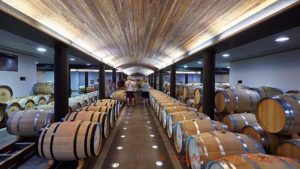
In between, we have experienced a lot, such as tango in Buenos Aires, malbec and torrontes wines in Mendoza, the amazingly tasty and tender meat, vineyards out on the Pacific coast of Chile, but also inland, in Colchagua.
In this beautiful place, we enjoy summer while learning about the wines from inspiring wine producers. A highlight of the tour is the spectacular bus ride across the Andes. Here we cross the border between Argentina and Chile, at an altitude of 3000 meters. And our outdoor lunches with empanadas and beef and vegetables on the barbecue are unforgettable.
Join us on our wine tour to South America!
- Wine tour to Chile-Argentina, January, 2023
Book now: your wine tour to Chile-Argentina with BKWine!
South Africa wine tour 2023: a magnificent and surprising wine country to explore
Our tour to South Africa takes place in February, when it is harvest time and a lot of activities in the vineyards and the cellars. The grapes are ripe and it is a pleasure to walk around in the vineyards.
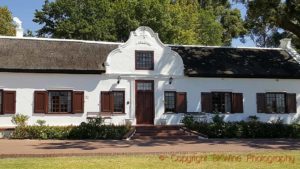
Even if the wine is our main focus, we will have time for some sightseeing such as the Cape of Good Hope and Table Mountain. We cover several of the country’s wine regions: Elgin, Walker Bay, Franschhoek, Swartland and Stellenbosch. The tour will give you an outstanding insight into South Africa as a wine country.
We will meet some creative winemakers who love to stray from the beaten paths and to experiment. But we also taste more classic Bordeaux blends and not least South Africa’s most planted grape chenin blanc, from which today’s winemakers make absolutely fantastic wines, and the country’s own red grape, pinotage, an interesting grape that is now becoming more and more popular.
South Africa today is so much fun to explore. South Africa is worth a wine tour!
Discover South Africa on a wine tour with us.
- Wine tour to South Africa, February 2023
Book now: your wine tour to South Africa with BKWine!
New Zealand wine tour 2023: An adventure far away with wine, local food and beautiful scenery
A magnificent 2-week wine tour that will show you a big part of New Zealand, not least many of the wine regions. You will discover sauvignon blanc and pinot noir wines, of course. These are the two signature grapes of the country, but also a lot more.
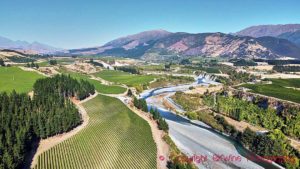
They make some lovely wine from riesling, pinot gris, cabernet sauvignon, syrah and many more grapes. Our tour is a wonderful “road trip” that takes us by bus from Auckland on the North Island down to Queenstown in beautiful Central Otago on the South Island with its spectacular scenery.
We travel for 16 days and we will of course focus on the New Zealand wines but we will also have time to enjoy the special and beautiful nature, the capital Wellington, the smaller towns and the culture. The country is far away from everything. But it is well worth the long journey there. The wine tour to New Zealand is an adventure.
Join us on our New Zealand tour, a great adventure.
- Wine tour to New Zealand, March 15-30, 2023







